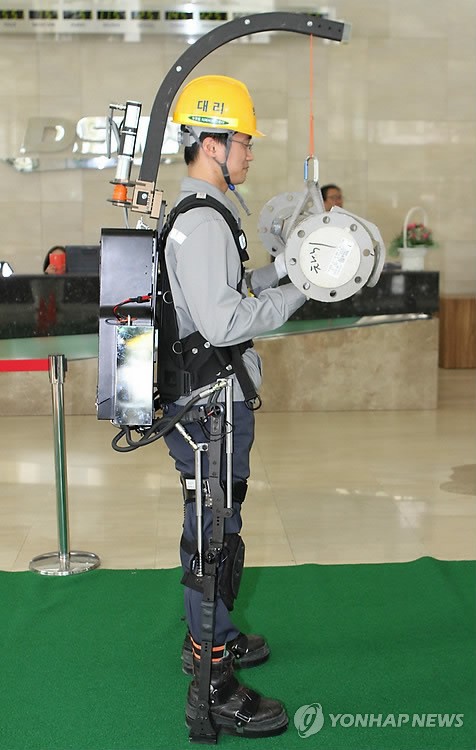High-tech robotic suits that give their wearers super-human abilities no longer exist just in the realm of science fiction, which has been true for a couple of years now. But though we’ve created quite a few real-life robo-suits, we haven’t really seen them actually put to use: until a South Korean ship-building company decided to see if their exoskeletons could help them build the world’s biggest cargo ship.

The robotic exoskeletons are being put to use by Daewoo Shipbuilding and Marine Engineering in South Korea, where workers are using them to lift metal, pipes, and other building materials up to 70 pounds as if they weighed nothing.
The exoskeleton is being developed for regular use in the shipyard, though thus far only a few workers are using them. It’s frame is made out of lightweight aluminum alloy, carbon, and steel, allowing users to wear it for a long period without becoming fatigued. A combination of hydraulic joints and electric motors run up the suit’s legs, where they connect to a pack on the users’ back that powers the suit.

A worker could attach a frame or exoskeleton designed for a specific task to the backpack—some have a small crane curving over the worker’s head, for example. When shifting building materials, the exoskeleton handles most of the weight—as well as increasing the user’s natural lifting ability—so heavy loads can be moved with ease.
Currently, Daewoo is using the suits to help build the 10,55,000-tonne container ships they promised the Maersk shipping company, the largest of their kind that have ever been built. According to New Scientist, workers are reporting positively on the exoskeleton’s contribution to their workload, and Daewoo is in the process of creating future suits that can move faster and handle heavier loads.
Maybe a future of robotic/cyborg workers isn’t as far away as we thought.
Source New Scientist, Gizmodo
Advertisement





